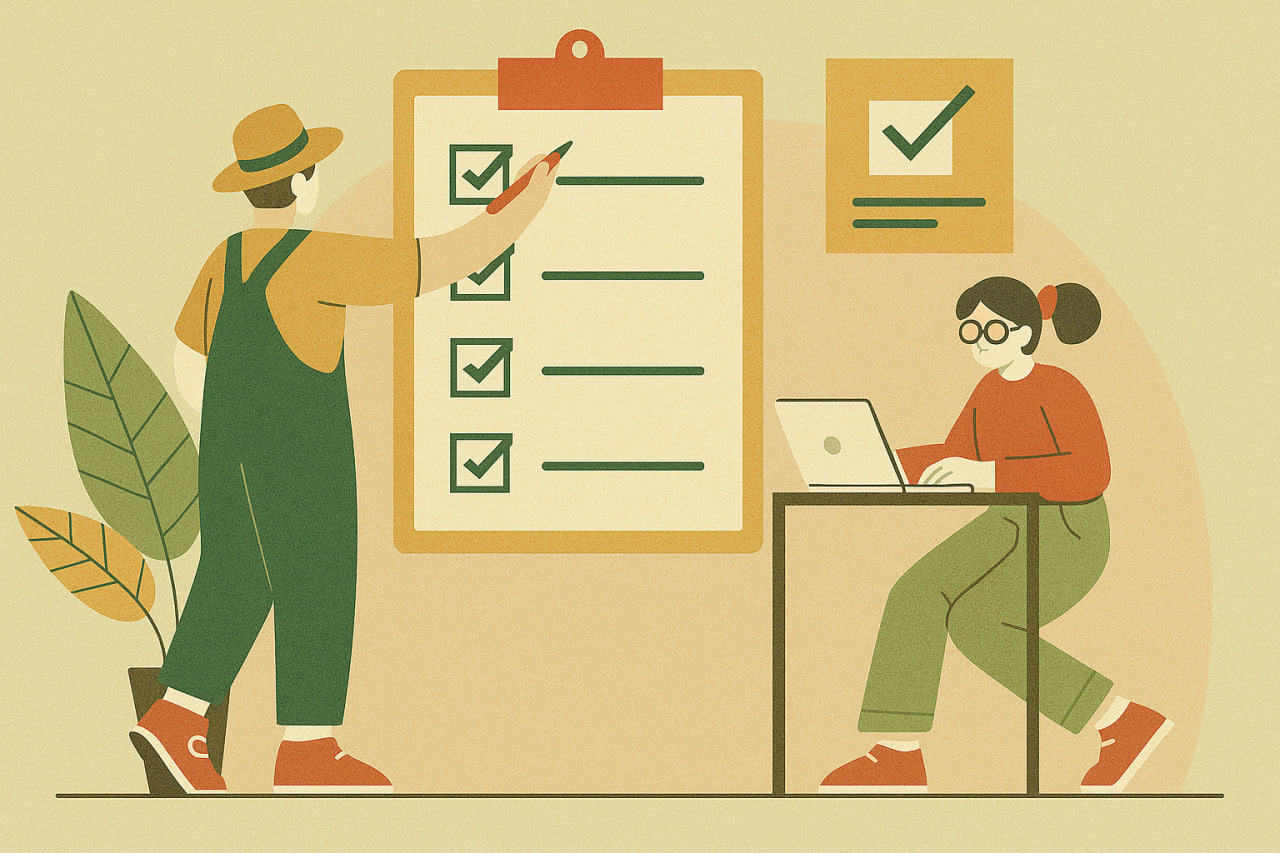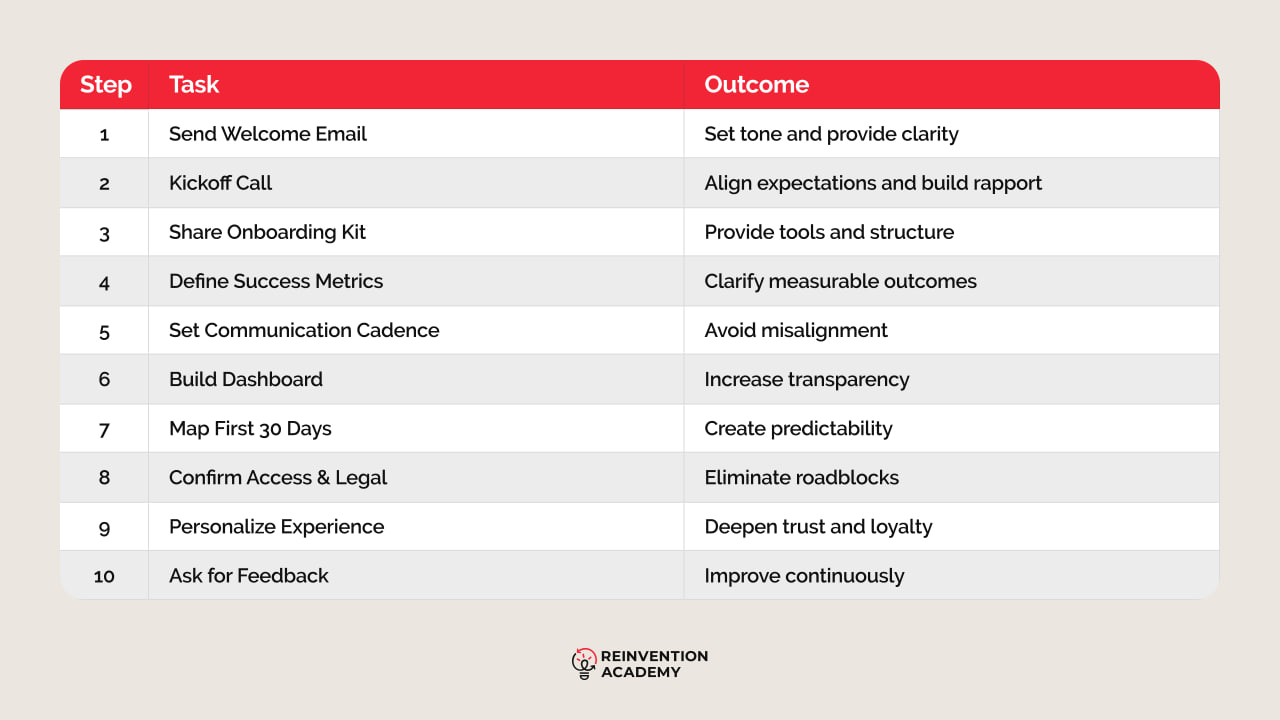The Client Onboarding Checklist: How to Wow Clients from Day One
Use this 10-step client onboarding checklist to impress clients from the start. Build trust, set clear expectations, and create lasting relationships from day one.

Why Client Onboarding Matters More Than Ever
Client retention begins the moment a deal is closed, not weeks later. In today’s fast-paced consulting environment, how you welcome clients in the first 48 hours sets the tone for the entire relationship. Done right, onboarding becomes more than paperwork: it’s your first major trust-building opportunity.
A seamless onboarding process reduces churn, increases client satisfaction, and accelerates time to value. More importantly, it shows clients that you’re not just a vendor—you’re a strategic partner who leads with clarity, structure, and care.
What Does It Mean to "Wow Clients From Day One"?
To "wow" clients doesn't mean overdelivering with extravagant extras. It means:
- Setting clear expectations
- Demonstrating professionalism and empathy
- Making clients feel seen, valued, and supported
- Showing you're organized, trustworthy, and results-driven
Consultants who "wow" clients early build stronger foundations, improve retention, and increase referrals. It's about creating emotional engagement, not just operational efficiency.
The first impression is the moment your brand becomes real for your client, not just in theory, but in practice. If that moment is disorganized or impersonal, you start with a trust deficit. If it’s confident and intentional, you gain momentum.
What Is Client Onboarding and Why Is It Crucial?
Client onboarding is the structured process of transitioning a new client from sale to delivery. It’s not just administrative, it’s strategic.
Effective onboarding does several things:
- Aligns everyone around goals and expectations
- Reduces misunderstandings and future conflicts
- Reinforces the client’s buying decision
- Accelerates project momentum
Think of onboarding like the first 15 minutes of a flight: it sets the course, altitude, and experience for everything that follows. If you miss this window, turbulence becomes more likely.
For consultants, onboarding is a chance to:
- Show leadership from day one
- Establish your process and workflow
- Clarify how you’ll measure success together
- Create a two-way communication rhythm
The 10-Step Client Onboarding Checklist
1. Send a Welcome Email With Clear Next Steps
This is your kickoff moment. It’s not just a thank-you, it’s a roadmap. The email should:
- Reinforce the client’s decision to work with you
- Provide immediate clarity on what happens next
- Introduce timelines, tools, and key contacts
Example: "Welcome aboard! We're excited to begin our partnership. Here’s what you can expect in the next 7 days..."
Don’t forget to include links to calendars, project dashboards, or any resources they’ll need.
2. Set Up a Kickoff Call (and Come Prepared)
This isn’t just a formality. It’s a strategy session. Use the kickoff call to:
- Align expectations and goals
- Reconfirm deliverables and scope
- Set a collaborative, energetic tone
Pro tip: Send an agenda 24 hours in advance. Ask, "What would make this call a success for you?"
3. Share an Onboarding Packet or Client Welcome Kit
The welcome kit is your first tangible impression. It should include:
- A recap of what was sold (scope, outcomes)
- Project timeline and key dates
- Communication preferences and escalation protocols
- Access to tools, links, and documentation
Optional: Add a personal note or branded welcome gift. A small gesture can signal high-level service.
Pro tip: Use a tool like Canva or Notion to design a branded PDF for easy delivery.
4. Define Success Metrics Together
Success is meaningless unless both sides agree on what it looks like. Work together to define:
- Key performance indicators (KPIs)
- Milestones for the first 30, 60, and 90 days
- What “great” looks like to your client
Tip: Document these in a shared file so you can track progress.
Example: "For the first 30 days, we aim to increase your lead quality by 25% through revised targeting."
5. Clarify Communication Cadence
Poor communication leads to broken trust. Set expectations early:
- How often will you send updates? (Weekly? Bi-weekly?)
- What platform will you use? (Slack, Zoom, Email?)
- Who are the main points of contact on each side?
Best practice: Include this in your welcome kit and revisit it every 30 days.
Example: "Let’s plan for a quick 15-minute check-in every Friday via Zoom. I’ll send a summary afterward."
6. Build a Shared Project Dashboard
Visibility builds trust. Use tools like Notion, Trello, or Asana to:
- Track key deliverables and deadlines
- Show real-time progress
- Provide a centralized communication log
Example: A Notion board organized by milestones, with embedded documents and comments.
Pro tip: Give your client “view-only” access to certain dashboard sections to reduce overwhelm.
7. Map the First 30 Days With a Timeline
Avoid ambiguity by showing what’s ahead:
- Week 1: Discovery, research, or audits
- Week 2: Initial implementation or strategy proposal
- Week 3: Review session or progress call
- Week 4: First milestone delivery
This gives clients confidence and prevents misaligned expectations.
Example: Send a one-page timeline PDF as part of your onboarding kit to visually reinforce the plan.
8. Confirm Tools, Access, and Legal Details
Before you dive into work, make sure the logistics are covered:
- Contract signed
- Payment method confirmed
- Access to internal tools, drives, or CRM granted
Tip: Use a shared checklist to make this process foolproof.
Pro tip: Tools like Jotform or Dubsado can automate much of this with intake forms.
9. Personalize the Experience
No one wants a templated relationship. Add personal touches:
- Reference their mission, product, or team members by name
- Send a handwritten thank-you note or personalized Loom video
- Use their brand colors or language style in documents
Result: The client feels like your only client.
Example: "Loved your recent blog post on sustainability. Can’t wait to align our strategy around that mission."
10. Ask for Feedback Early
Don’t wait for the final report to learn something went wrong. Ask:
- “How is everything going so far?”
- “What could make this experience even better?”
Do this after the first week or initial delivery. It signals humility and proactivity.
Pro tip: Use a 3-question feedback form (like Typeform) to make responses easy and actionable.
Reinvention Mindset: Onboarding Is a Moment of Truth
Dr. Nadya Zhexembayeva reminds us that reinvention is not a one-time pivot; it’s a continuous capacity to respond to change with clarity and confidence. Your onboarding process is a direct expression of that capacity.
By designing an intentional onboarding experience, you:
- Build resilience into your client relationships
- Reinforce your value beyond deliverables
- Set the foundation for upsells, referrals, and long-term loyalty
Don’t let onboarding be an afterthought. Make it your competitive edge.
Final Checklist Summary (Quick Reference Table)

Ready to reinvent your onboarding process? Start with these 10 steps and wow your clients from day one.


.svg)